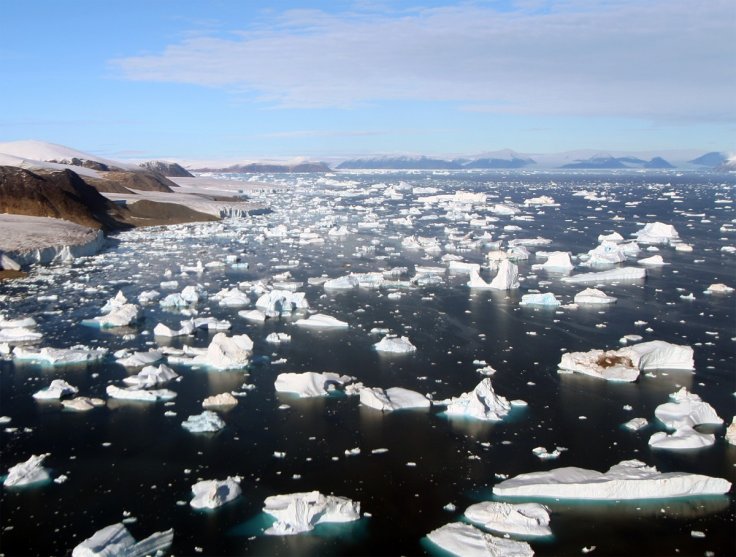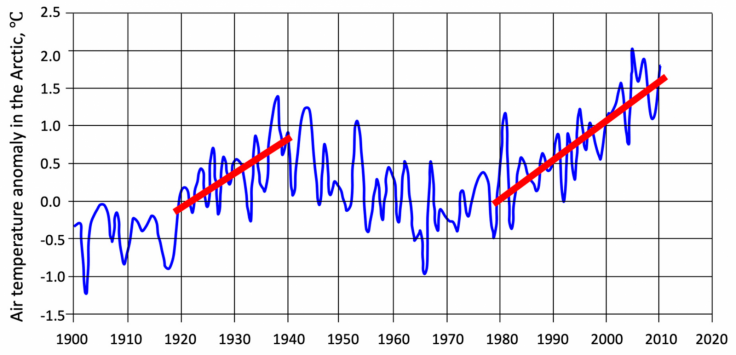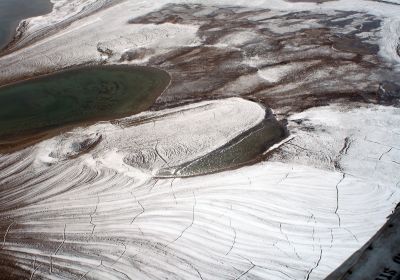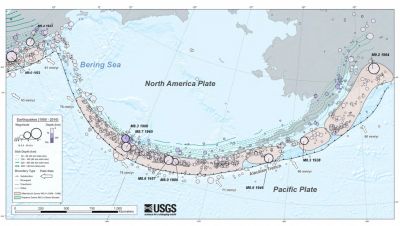The common notion is that climate change and global warming are responsible for melting ice in the Arctic region. Scientists say that due to the planet's rising temperature, thanks to greenhouse gasses, the Arctic is on a melting spree and contributing to sea-level rise. However, a study claims that the reason could be earthquakes that are contributing to the rising temperature in the Arctic.
While human activity is causing the rising temperature of the planet and could be responsible for melting glaciers in the Arctic, there has been one loophole in the observation. The temperature in the Arctic spikes fairly abruptly at times. The effects of global warming would be stretched over many years and would not cause sudden spikes.
To explain that, researcher Leopold Lobkovsky, head of the MIPT Laboratory for Geophysical Research of the Arctic and Continental Margins of the World Ocean and a member of the Russian Academy of Sciences, investigated historical records of earthquakes and rise in temperature. He found that after every earthquake, there was an abrupt change in the Arctic temperature.

Rise in Arctic Temperature
Since the 1970s, the temperature in the Arctic has risen by 2.3 degrees Celsius. It may seem minuscule but in terms of climate, such a change could be problematic. As the climate warms, the Arctic's permafrost melts and releases methane, a greenhouse gas that further contributes to rising temperature. This was the general hypothesis until now.
But Lobkovsky noticed that the Arctic region had seen two periods of abrupt warming — in the 1920-1930 and then since 1980 that is continuing to this day. The Russian researcher hypothesized that geodynamics factors could be behind rising temperatures in the Arctic, especially a series of earthquakes in the Aleutian Arc, the closest seismically active area.
To prove his hypothesis, Lobkovsky looked at the dates of great earthquakes and compared the abrupt temperature rise. He found that those two coincided. In the 20th century, the Aleutian Arc had two series of great earthquakes and each event was followed up with a spike in temperature for about 15 to 20 years.

The first spike in temperature was noticed after a magnitude 8 earthquake in the eastern part of the Aleutian Arc. It was followed by two more earthquakes — 8.3 and 8.4 — in the western part. Another spike in temperature was noticed in the following years of 1957's 8.6 magnitude earthquake. It was followed up with a massive 9.3 magnitude earthquake in 1964 in Alaska. Another 8.7-magnitude earthquake rattled the western part of the arc the following year.
Correlation Between Earthquakes and Temperature Rise
With every earthquake in the Aleutian Arc, the geodynamic mechanism transmitted the stress in the lithosphere, heating the ground. The stress also contributes to disruption in the internal structure of the metastable gas hydrates and permafrost, leading to methane emission. To prove that, Lobkovsky looked at a model of lithospheric excitation dynamics. The model explains the propagation of tectonic waves that travel at around 100 kilometers per year. This model answered the delay between two earthquakes in the region.
"There is a clear correlation between the great earthquakes in the Aleutian Arc and the phases of climate warming. A mechanism exists for physically transmitting the stresses in the lithosphere at the appropriate velocities. And these added stresses are capable of destroying metastable gas hydrates and permafrost, releasing methane," Lobkovsky explained in his study that was published in the journal Geosciences.



"Each of the three components in this scheme is logical and lends itself to mathematical and physical explanation. Importantly, it explains a known fact — the abrupt rise in temperature anomalies in the Arctic — which remained unaccounted for by the previous models," he added.
While the study does explain the abrupt rise in the Arctic temperature, it should be noted that sustained emission of greenhouse gasses in the other parts of the planet also leads to global warming. In addition to earthquakes, the steady rise in planet temperatures could speed up the process of methane emission in the Arctic region.









